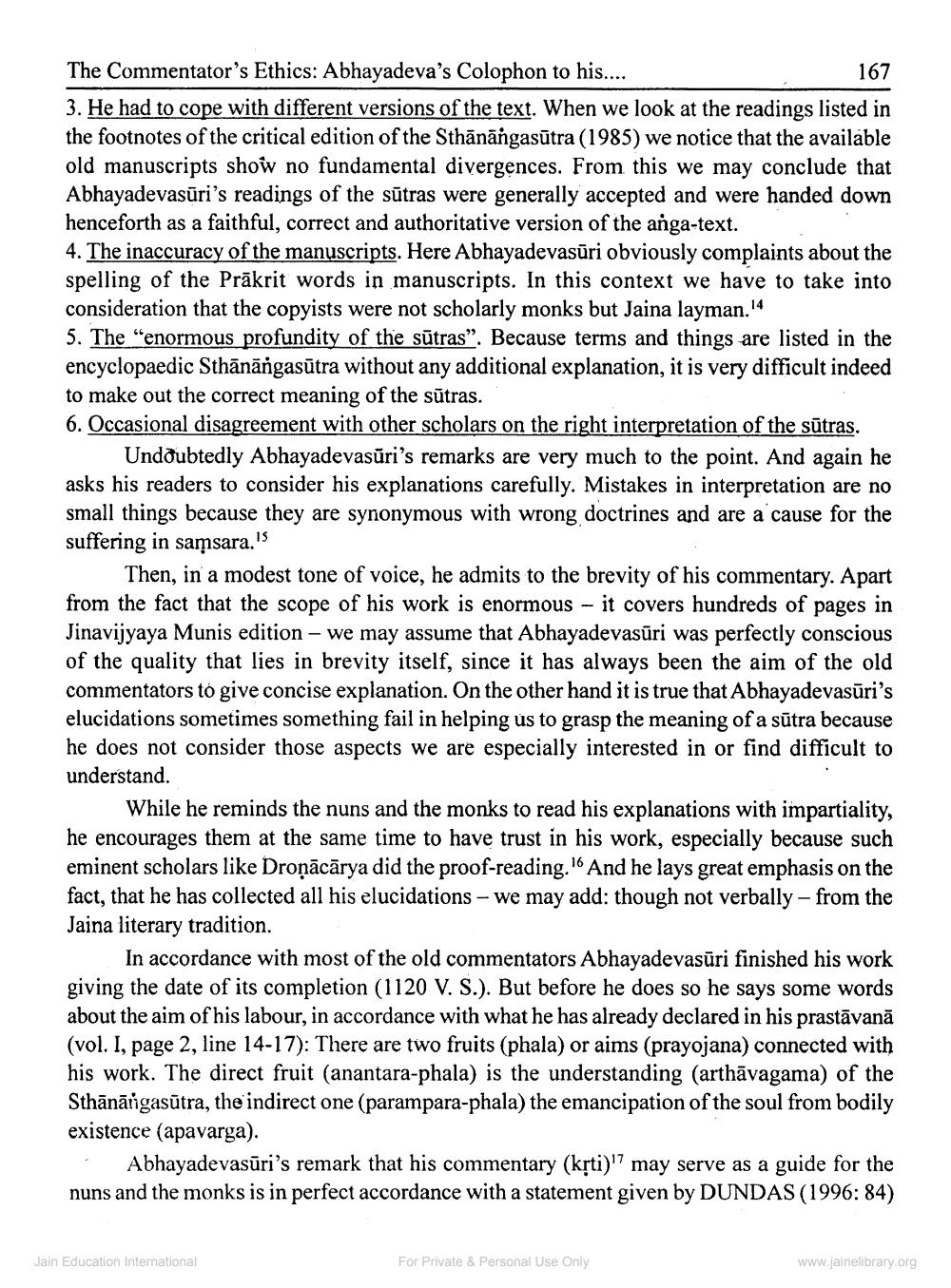________________
The Commentator's Ethics: Abhayadeva's Colophon to his....
167 3. He had to cope with different versions of the text. When we look at the readings listed in the footnotes of the critical edition of the Sthānāngasūtra (1985) we notice that the available old manuscripts show no fundamental divergences. From this we may conclude that Abhayadevasūri's readings of the sūtras were generally accepted and were handed down henceforth as a faithful, correct and authoritative version of the anga-text. 4. The inaccuracy of the manuscripts. Here Abhayadevasūri obviously complaints about the spelling of the Prākrit words in manuscripts. In this context we have to take into consideration that the copyists were not scholarly monks but Jaina layman.14 5. The “enormous profundity of the sūtras”. Because terms and things are listed in the encyclopaedic Sthānāngasūtra without any additional explanation, it is very difficult indeed to make out the correct meaning of the sūtras. 6. Occasional disagreement with other scholars on the right interpretation of the sūtras.
Undoubtedly Abhayadevasūri's remarks are very much to the point. And again he asks his readers to consider his explanations carefully. Mistakes in interpretation are no small things because they are synonymous with wrong doctrines and are a cause for the suffering in samsara."
Then, in a modest tone of voice, he admits to the brevity of his commentary. Apart from the fact that the scope of his work is enormous - it covers hundreds of pages in Jinavijyaya Munis edition - we may assume that Abhayadevasūri was perfectly conscious of the quality that lies in brevity itself, since it has always been the aim of the old commentators to give concise explanation. On the other hand it is true that Abhayadevasūri's elucidations sometimes something fail in helping us to grasp the meaning of a sūtra because he does not consider those aspects we are especially interested in or find difficult to understand.
While he reminds the nuns and the monks to read his explanations with impartiality, he encourages them at the same time to have trust in his work, especially because such eminent scholars like Droņācārya did the proof-reading. 16 And he lays great emphasis on the fact, that he has collected all his elucidations - we may add: though not verbally – from the Jaina literary tradition.
In accordance with most of the old commentators Abhayadevasūri finished his work giving the date of its completion (1120 V. S.). But before he does so he says some words about the aim of his labour, in accordance with what he has already declared in his prastāvanā (vol. I, page 2, line 14-17): There are two fruits (phala) or aims (prayojana) connected with his work. The direct fruit (anantara-phala) is the understanding (arthāvagama) of the Sthānārgasūtra, the indirect one (parampara-phala) the emancipation of the soul from bodily existence (apavarga).
Abhayadevasūri's remark that his commentary (krti) may serve as a guide for the nuns and the monks is in perfect accordance with a statement given by DUNDAS (1996: 84)
Jain Education International
For Private & Personal Use Only
www.jainelibrary.org




